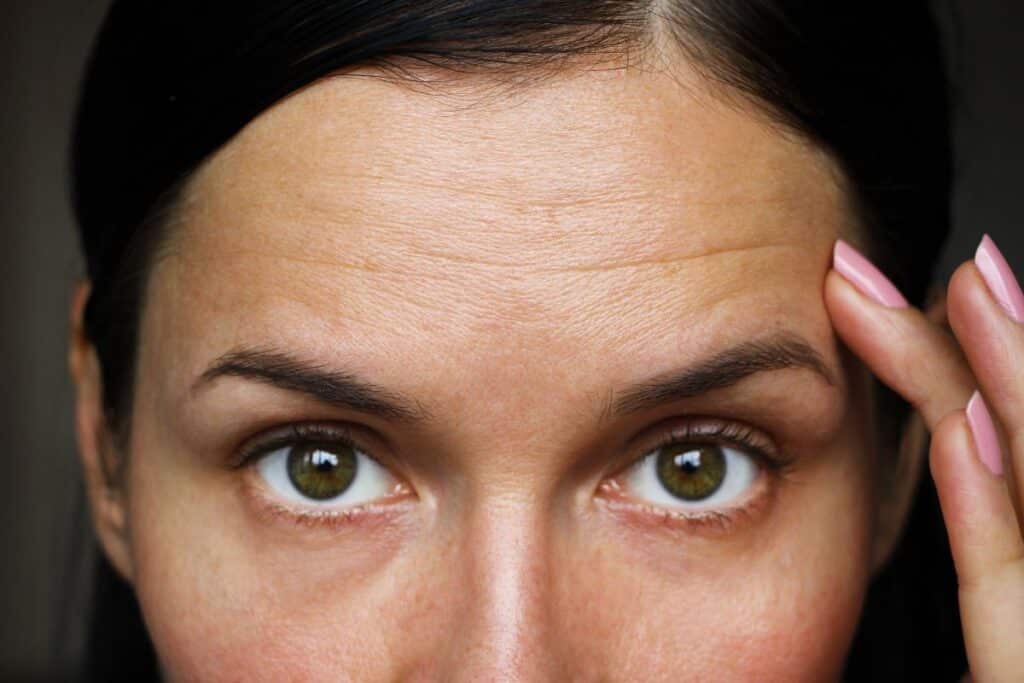If you’re considering forehead rejuvenation, understanding the differences between a coronal brow lift and a thread brow lift is important. Dr. Joanna Kam specializes in facial rejuvenation and can provide valuable insights into these procedures. Her goal is to provide you with clear information on the effectiveness, recovery process, and potential outcomes of each technique.
Understanding the intricacies can mean the difference between achieving your desired aesthetic and facing unforeseen complications. Dr. Kam is dedicated to ensuring patients are equipped with the essential knowledge to select the cosmetic procedure that aligns with their needs and expectations, thereby fostering confidence in their cosmetic journey. Let’s delve into the specifics and shed light on what patients genuinely need to comprehend about coronal and thread brow lifts.

Comparing Coronal Brow Lifts and Thread Brow Lifts
- Coronal brow lifts involve a significant incision and provide long-lasting results, ideal for deep furrows or sagging brows.
- Thread brow lifts are minimally invasive, offering quicker recovery but with less dramatic and shorter-lasting results.
- Recovery from a coronal brow lift includes significant swelling and a longer healing period, while thread lifts have minimal downtime.
- Both procedures have potential risks, with coronal lifts carrying higher risks of nerve damage and scarring, while thread lifts can lead to minor scarring and thread displacement.
- Ideal candidates for coronal brow lifts have significant sagging and a stable hairline, while thread brow lifts suit those seeking minor enhancements with minimal recovery time.
OVERVIEW OF CORONAL BROW LIFT TECHNIQUES
The coronal brow lift is a traditional procedure among surgical techniques. In this procedure, a surgeon creates an incision across the scalp, concealed by hair. They lift the forehead skin to adjust and remove any excess, resulting in a more youthful look. This method offers a considerable lift and can correct deep furrows or sagging brows effectively.
Other forehead lift techniques include endoscopic brow lift and temporal brow lift. These are less invasive alternatives:
- Endoscopic brow lift surgery: Involves smaller incisions and uses an endoscope. It is chosen for reduced scarring and faster recovery, while still enhancing the appearance.
- Temporal brow lift: A single incision that focuses on lifting the outer part of the brows, offering a subtle change that brightens the eye area.
Each method has specific benefits, based on the patient’s needs and desired results. While coronal brow lift provides an extensive solution, the endoscopic and temporal options are for those preferring less invasive methods for particular improvements.
OVERVIEW OF THREAD BROW LIFT METHODS
A thread brow lift is a cosmetic surgery option for lifting the eyebrows. It is less invasive than other brow lift procedures. A plastic surgeon places fine threads under the skin of the brow area, which has cones or barbs that help in lifting and fixing the brow’s new position.
During the treatment, the surgeon must place the threads with care to ensure a natural-looking elevation. After the procedure, patients often recover quickly and can resume their normal routines soon after.
The results of a thread brow lift surgery provide a subtle improvement and are not as lasting as more invasive methods. This type of lift is suited for people seeking a mild intervention to combat aging signs around the eyes.
PROCEDURE EFFICACY AND LONGEVITY
Coronal Brow Lifts
A coronal brow lift is aimed at reducing forehead wrinkles and lifting the brow to give you a more youthful look. The results from this procedure can last over ten years because it permanently repositions the skin and tissue.
Thread Brow Lifts
Thread brow lifts offer a less dramatic lift, improving your appearance without major surgery. The results usually last between 1 to 3 years, as the body gradually absorbs the sutures.
Both options have their advantages. Coronal brow lifts provide a long-term solution, while thread lifts offer a quicker, less invasive fix. When deciding, think about how much change you want and how often you’re willing to maintain it.
INVASIVENESS AND RECOVERY TIME
Coronal Brow Lifts
Coronal brow lift is an invasive technique that involves a significant incision across the scalp, hidden in the hairline, to lift and reposition forehead skin. This method is more invasive and requires more recovery time as it involves extensive tissue alteration. Patients usually have a longer recovery period and can expect:
- Swelling and bruising post-operation that decreases gradually.
- Ability to resume daily activities roughly two weeks after surgery.
- Avoidance of heavy exercise for one month.
- Tailored aftercare instructions to aid healing.
Thread Brow Lifts
In contrast, this type of forehead lift is minimally invasive. This technique uses thin threads and a needle, without any cuts to the skin, resulting in less trauma and a shorter healing timeline. Thread brow lift recovery includes:
- Less pronounced swelling and discomfort compared to coronal brow lift surgery.
- Return to daily activities typically within a few days.
- A gradual securing of the threads over a few weeks.
Post-surgery patient care instructions for both procedures aim to optimize recovery. The usual time to full recovery varies, with thread lifts offering a quicker return to normalcy.
POTENTIAL RISKS AND COMPLICATIONS OF THE PROCEDURES
Coronal Brow Lifts
Surgical brow lifts can rejuvenate the forehead but may involve certain risks. Operating around facial nerves has the rare possibility of resulting in facial paralysis. Patients should be monitored for any signs of nerve damage after the procedure.
Patients undergoing coronal brow lifts could experience:
- Hematomas or notable swelling
- Infections treatable with medications
- Reduced sensation near the incision
- Visible scars that might necessitate additional surgery
Surgeons may recommend pain medication for managing postoperative discomfort. Following the given aftercare instructions can help lower the risk of complications.
Thread Brow Lifts
A less invasive option, thread brow lifts introduce different risks, such as minor scarring, less than with a direct brow lift. Incorrect thread placement might cause facial asymmetry or noticeable nodules under the skin. It’s crucial to select a competent surgeon for this procedure.
Thread brow lifts may lead to:
- Short-term bruising or discomfort
- Minor scarring at the points where threads enter or exit
- Threads moving or coming out after some time
Post-surgery, strenuous activities should be avoided as instructed to help the threads stay in place. Pain medication is typically given to address any discomfort.
IDEAL CANDIDATES FOR EACH PROCEDURE
Coronal Brow Lift
Coronal brow lifts are best for those who have:
- Loose skin on their foreheads and noticeably drooping eyebrows.
- A non-receding hairline and minimal history of hair loss, since the incision is made behind the hairline.
- The ability to handle a longer recovery period due to the extensive nature of the procedure and the stitches involved.
- A clean medical history that makes them suitable for surgery and anesthesia.
Thread Brow Lift
Thread brow lifts are ideal for individuals with:
- Minor signs of aging on the forehead.
- Skin that is still elastic and resilient.
- A preference for a quicker recovery and a lower risk of hair loss.
- Goals for subtle facial enhancement without needing major skin removal.
For both procedures, it’s important that candidates have a medical history free of complications that might affect the procedure or recovery. If you’re looking to refresh your appearance, these options can help you achieve your cosmetic goals depending on your needs and preferences.
CHOOSING THE RIGHT PROCEDURE

Deciding on the right type of brow lift requires attention to the expected results. A coronal lift targets forehead creases or frown lines effectively. This surgical procedure involves cutting into the hair-bearing part of the scalp and suits a patient with a non-receding hairline.
Your surgeon is key to advising on types of brow lifts suitable for you, considering your skin elasticity, scalp position, and how much rejuvenation you seek. Both forehead lifts and temporal lifts aim to raise the brow and surrounding soft tissue, improving the upper eyelid area and complementing the natural shape of your head.
Different types of brow lifts may affect recovery. A coronal lift often demands more pain medication post-surgery due to a larger incision in the hair, while thread lifts have minor cuts and a quicker healing time but might not address a significantly elevated hairline or sagging as effectively.
Choosing a procedure, including possible eyelid surgery, should lead to a refreshed look in line with your cosmetic goals.
TALK WITH A FACIAL PLASTIC SURGEON
Deciding between these facial rejuvenation procedures is a significant choice that impacts your appearance and confidence. To navigate this decision wisely, it’s crucial to consult with an expert who understands your unique facial structure and goals.
Schedule a consultation with the experienced plastic surgeon Dr. Joanna Kam to explore your options in-depth. Dr. Kam’s expertise will guide you toward the procedure that aligns best with your needs, ensuring results you’ll love. Don’t wait to take the next step toward a youthful appearance.

